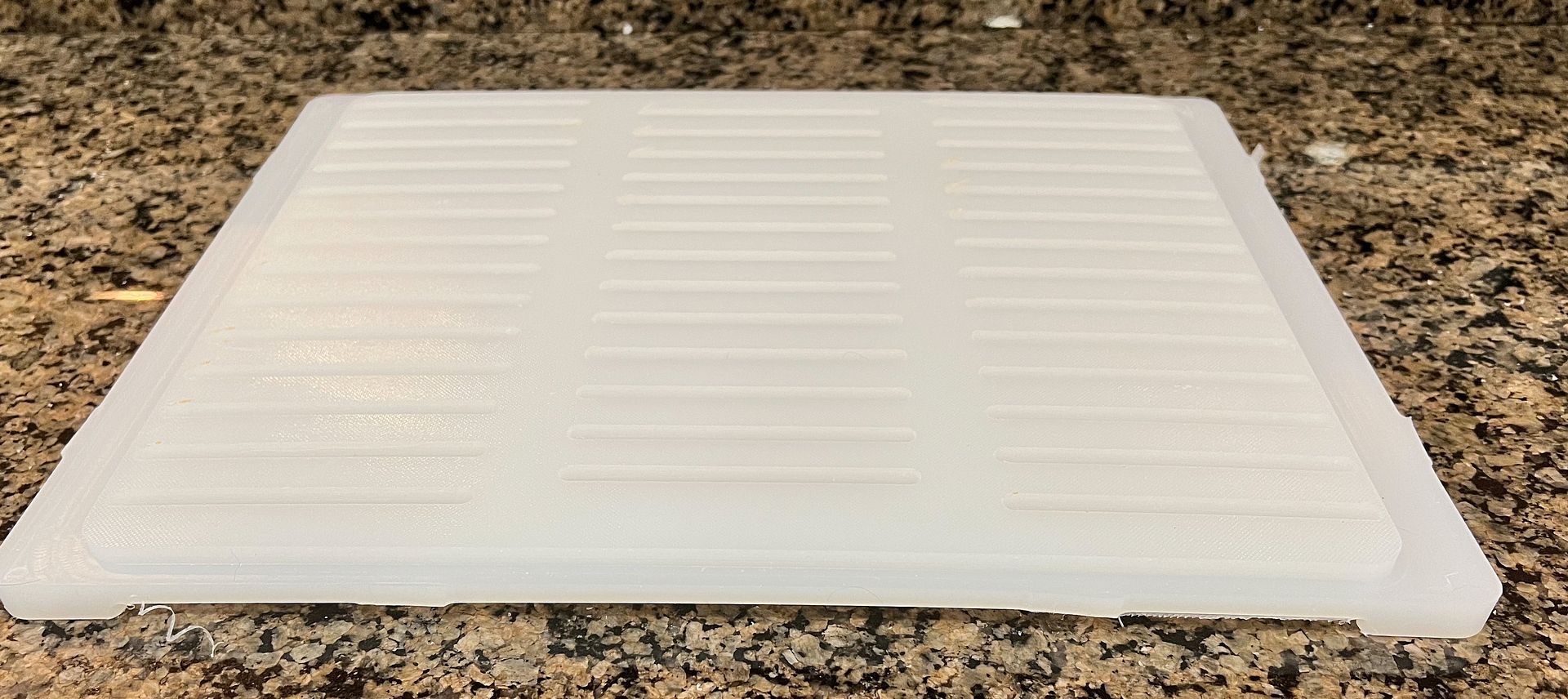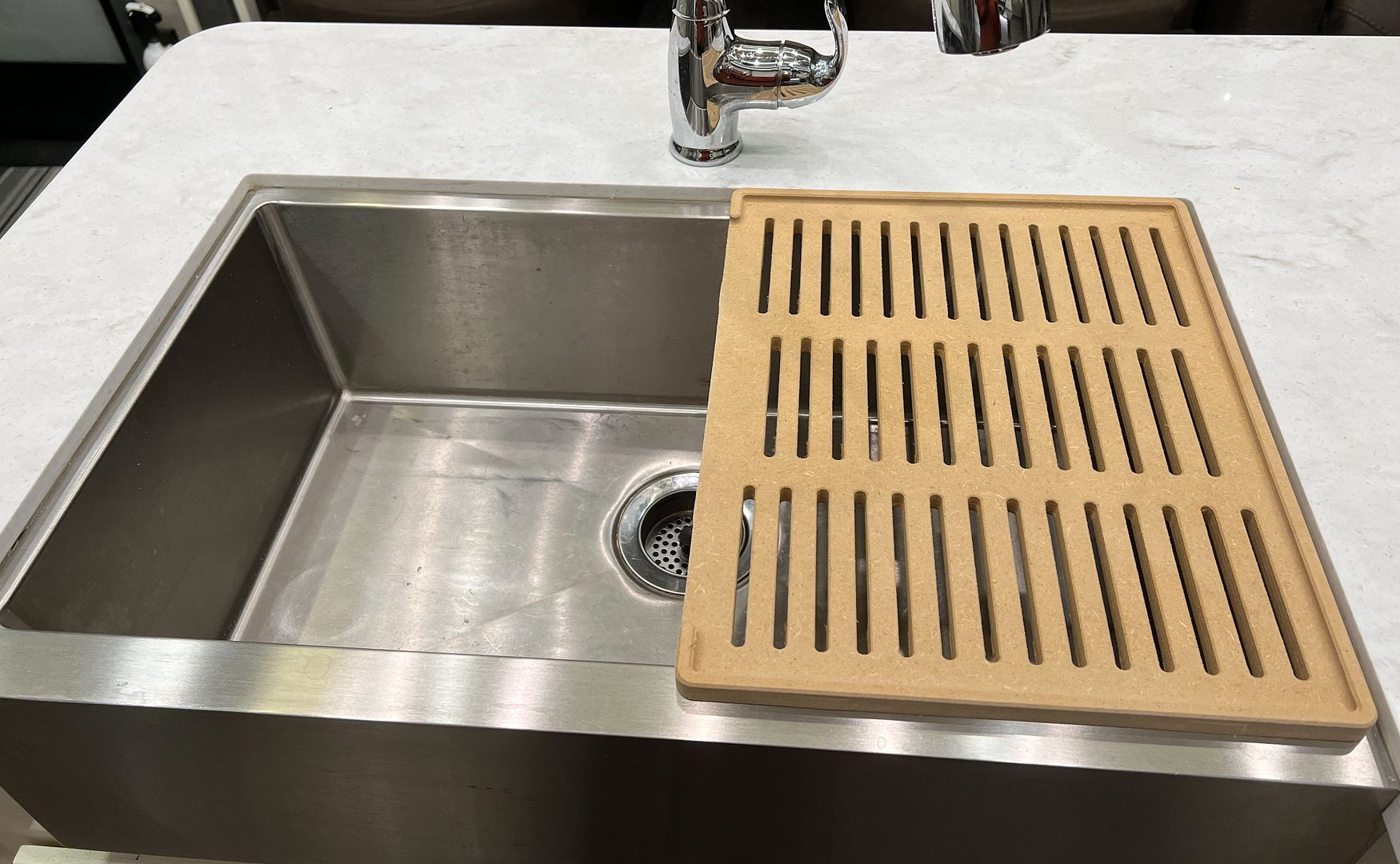I wanted to make a drain board for my RV, so I bought a cutting board, from Amazon, that was large enough to make two. It was 3/4" (18.75mm) thick.
The top I pocketed out 1/4" and left a 1/4" wide rim around 3 sides. The drain slots go all the way through. On the underside, I pocketed out around the edge so it sits in the sink cutout.
This worked great on my MDF prototype, but the HDPE curled/warped like I had released some internal memory stresses. Mostly on the edge where I did not have the upper rim. (Left edge in photo MDF below). The bulk of the board, an area larger than the drain slots is still 1/2" thick.
Of all the plastic cutting boards, we've had for years, run them through the dishwasher, none have warped.
Also looking for suggestions for a better material.
Thanks







 Reply With Quote
Reply With Quote



